The US Senate’s path to a Supreme Court hostile to Roe v Wade
How Mitch McConnell and Senate Republicans gamed the system to give Trump three Supreme Court picks.
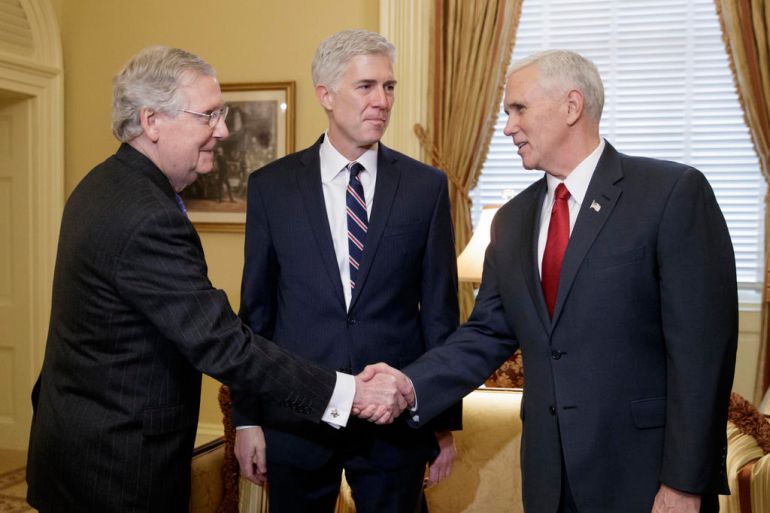
The path to a 6-3 conservative supermajority on the US Supreme Court that appears poised to overturn women’s right to an abortion in the United States traces back to political machinations by Republicans in 2016.
Justice Antonin Scalia, a celebrated judicial conservative who had served on the court since 1986, had died suddenly in his sleep at the age of 79 while on a quail hunting trip in Texas.
Keep reading
list of 4 itemsJackson’s US Supreme Court nomination moves forward in Senate
US Supreme Court confirms Roe v Wade draft opinion is ‘authentic’
US Supreme Court refuses to block Texas abortion ban
The US Constitution empowers the US president to nominate a person to fill a Supreme Court vacancy, and that the Senate provides “Advice and Consent” to confirm the nominee.
Barack Obama, a Democrat, was then the sitting president and nominated Merrick Garland, a well-regarded US appeals court judge, to replace Scalia.
It was March 2016, seven months before the next presidential election. The leader of the US Senate Republican Mitch McConnell, a conservative, said that is why he refused to allow legislators to consider Obama’s choice.
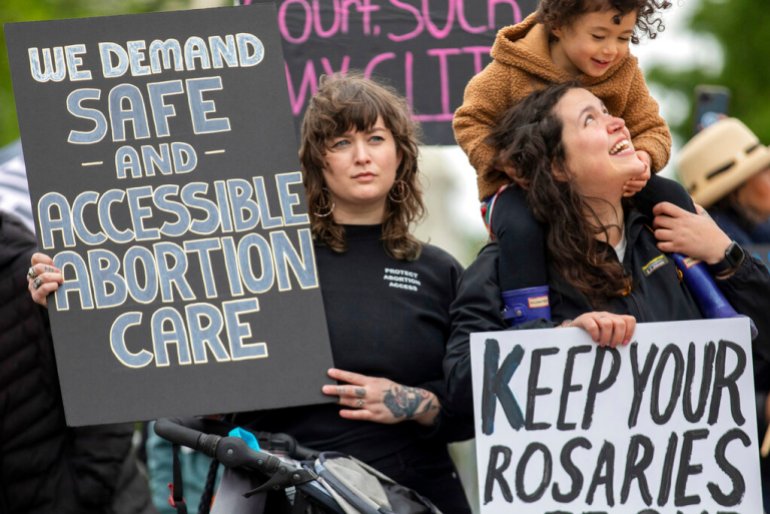
“The next justice could fundamentally alter the direction of the Supreme Court and have a profound impact on our country,” McConnell said, outlining his rationale for blocking Garland in a Senate speech.
McConnell said the vacancy came too close to the presidential election and since the 1800s, no party in opposition in the Senate had ever confirmed a Supreme Court nominee. Obama, in his second term, could not stand again.
“The American people may well elect a president who decides to nominate Judge Garland for Senate consideration,” McConnell said. “The next president may also nominate somebody very different. Either way, our view is this: Give the people a voice in filling this vacancy.”
In denying senators the right to consider Obama’s nomination, who democrats called a centrist and Republicans labelled left-wing, McConnell ensured Obama’s nominee could not be confirmed and opened the door to change the balance of the court.
“It was that decision that deeply politicised the court beyond what was normal and beyond what was happening before that,” Amanda Frost, a professor at American University Washington College of Law, told Al Jazeera.
“We are in this place because of the Republicans’ refusal to confirm or even hold a hearing for Obama’s nominee.”
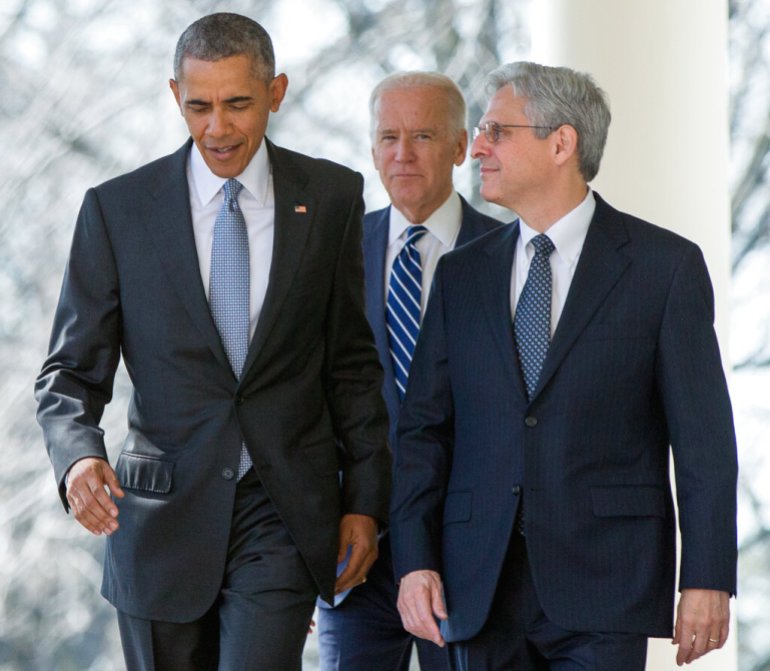
In his home state of Kentucky, McConnell boasted of having blocked Obama from allowing Garland the chance of filling Scalia’s seat.
“One of my proudest moments was when I looked at Barack Obama in the eye and I said, ‘Mr President, you will not fill this Supreme Court vacancy’,” McConnell told supporters in August 2016.
Before Scalia’s death, the ideological balance on the Supreme Court was 5-4, with a right-leaning but moderate tilt under Chief Justice John Roberts.
In November 2016, Republican candidate Donald Trump defeated Democrat Hillary Clinton.
Less than two weeks after taking office, on January 31, 2017, Trump nominated conservative Neil Gorsuch, to replace Scalia.
That April, Gorsuch was confirmed by Senate Republicans after they changed Senate rules to require only a simple majority, rather than the 60 votes previously needed to confirm a Supreme Court nominee.
This rule change would also make it easier for presidential nominees to be confirmed to the high court.
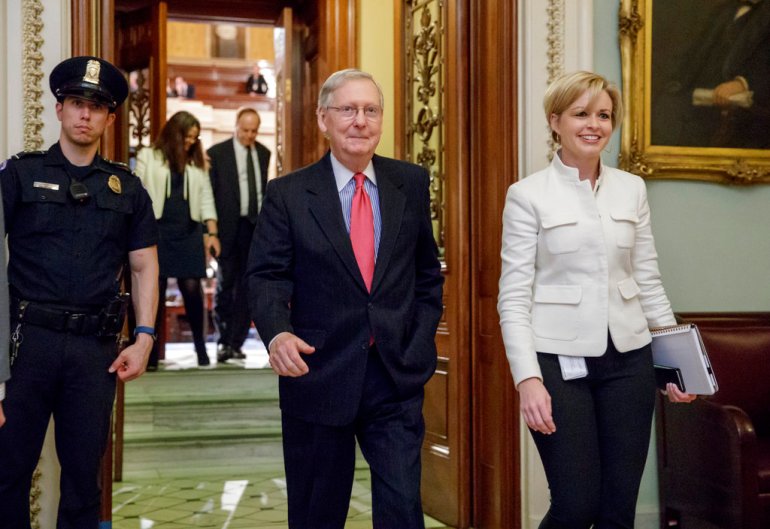
“We had an eight-member court for a year because the Senate majority leader refused to hold the vote,” said Abby Wood, a professor at the University of Southern California Gould School of Law, in a nod to the effect McConnell’s power play had on the judiciary.
Trump had promised on the campaign trail that if elected he would appoint justices who would overturn Roe v Wade.
“I am pro-life” candidate Trump had said in a televised debate with Clinton. Overturning Roe “will happen, automatically in my opinion”, he said, because he would nominate several anti-abortion rights justices to the court.
“The confirmation process is political,” Frost said, but the justices who are appointed “to life tenure with salary guarantees” are supposed to be impartial.
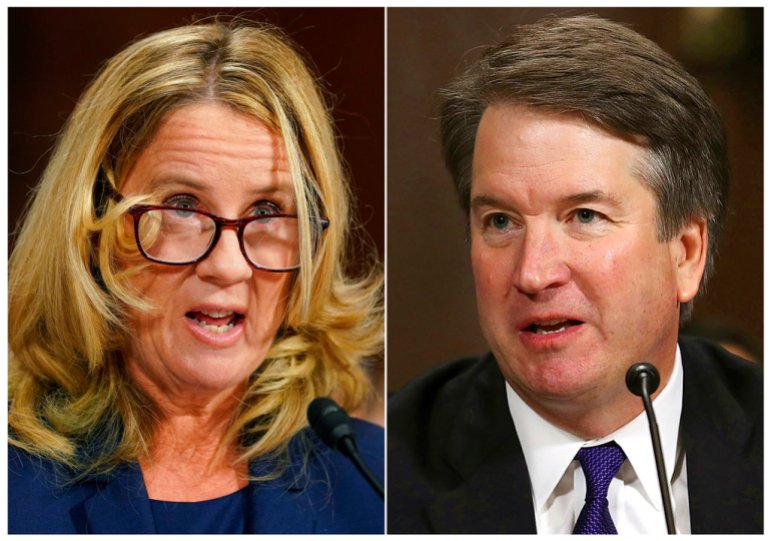
In 2018, Trump nominated Brett Kavanaugh to replace the retiring Justice Anthony Kennedy, who was seen as a centrist in his rulings including a 1992 case, Planned Parenthood v Casey, that upheld abortion rights in Roe.
Kavanaugh was backed by the right-wing Federalist Society, which helps place conservative judges on federal benches.
He survived a bruising confirmation battle after sexual misconduct allegations against him were brought forward by high school and college classmates. He was confirmed by the Senate in a 50-48 vote.
Then liberal Justice Ruth Bader Ginsberg died on September 18, 2020 just six and half weeks before the presidential election.
Ginsberg, who had suffered a long bout of cancer, dictated a dying wish to her granddaughter, that she not be replaced on the court, until a new president was elected – seemingly in step with McConnell’s 2016 rule.
Trump moved quickly to nominate Amy Coney Barrett, a Christian conservative, to replace Ginsberg who had been a champion of women’s rights.
“That same person [McConnell, who blocked Garland] then turned around and pushed through a nomination in an election year for a different presidency, after refusing to do that for President Obama,” Wood told Al Jazeera.
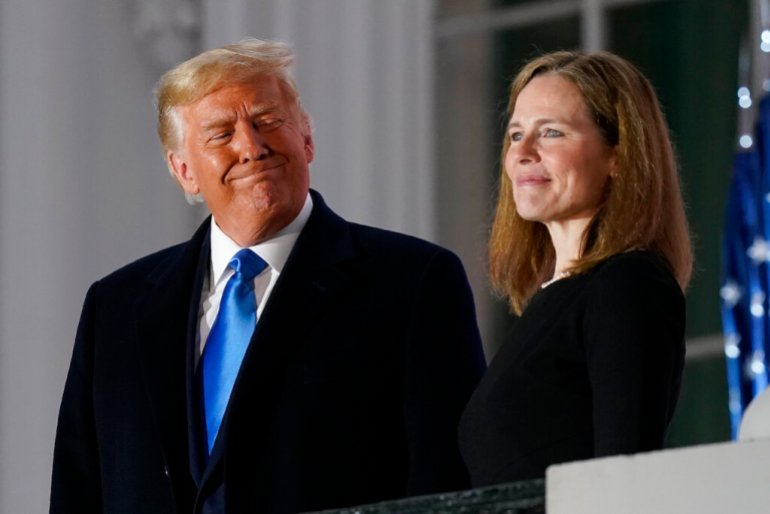
Barrett was nominated on September 26 and confirmed by Senate Republicans a month later in a 52-48 party-line vote, just eight days before the election of Democrat Joe Biden as president.
The court had a solid 6-3 conservative bent.
“They subjected Judge Garland to an unprecedented partisan blockade, but they’re erecting a monument to hypocrisy to rush Judge Barrett onto the bench,” Senate Democratic leader Chuck Schumer said in Senate remarks at the time.
“The far-right has never held a majority on the court to limit Roe v Wade. But if Judge Barrett becomes Justice Barrett – it very well might,” Schumer warned at the time.